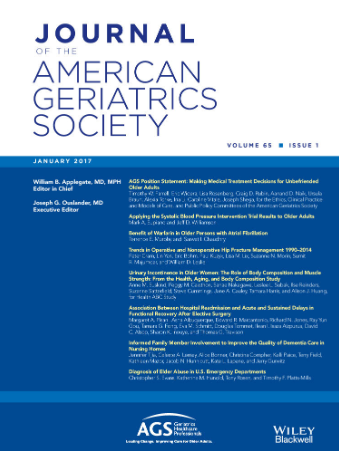Exploring Antipsychotic Initiation Among Persons Living With Dementia in a Comprehensive Dementia Care Program
Abstract
Background
Antipsychotic medications (APMs) are frequently prescribed for persons living with dementia despite limited benefits and increased risks. This study examined patient characteristics of those prescribed APMs, indications for initiation, and survival outcomes.
Methods
This retrospective cohort study of community-dwelling patients enrolled in a comprehensive dementia care program (2012–2014) focused on 190 patients not on an APM at baseline, with survival analyses including 200 additional patients on an APM at program entry. Patients were followed for 2 years for APM initiation and until January 2024 for mortality. Baseline measures included patient and caregiver demographics, Mini-Mental State Exam (MMSE), Functional Activities Questionnaire (FAQ), Modified Caregiver Strain Index (MCSI), caregiver Patient Health Questionnaire-9 (PHQ-9), and Neuropsychiatric Inventory Questionnaire (NPI-Q). Indications for APM initiation were abstracted from electronic health records. Logistic regression models examined associations between baseline characteristics and APM initiation. Survival was assessed using Kaplan–Meier estimates and Cox proportional hazards models.
Results
Among 190 patients (mean [SD] age, 81.2 [8.4] years; 60% female, and 80% Alzheimer's or dementia not otherwise specified) who were not on APMs at program enrollment, 65 (34%) initiated and 125 (66%) did not initiate an APM. NPI-Q severity (AOR 1.10, 95% CI 1.04–1.16) and NPI-Q distress (AOR 1.06, 95% CI 1.02–1.10) were associated with APM initiation. Agitation and psychotic symptoms were the most common indications, with quetiapine being the most frequently prescribed APM. Median survival was 37.8 months (IQR 19.3–63.2) for patients on an APM at baseline, 63.1 months (IQR 28.4–86.8) for patients initiating an APM, and 68.9 months (IQR 50–97.9) for patients not initiating an APM (p < 0.001).
Conclusions
APM initiation was common despite enrollment in a comprehensive dementia care program that prioritizes non-pharmacologic strategies. Survival differences underscore the need for risk–benefit discussions of APMs and goals of care discussions with caregivers.




 求助内容:
求助内容: 应助结果提醒方式:
应助结果提醒方式:


